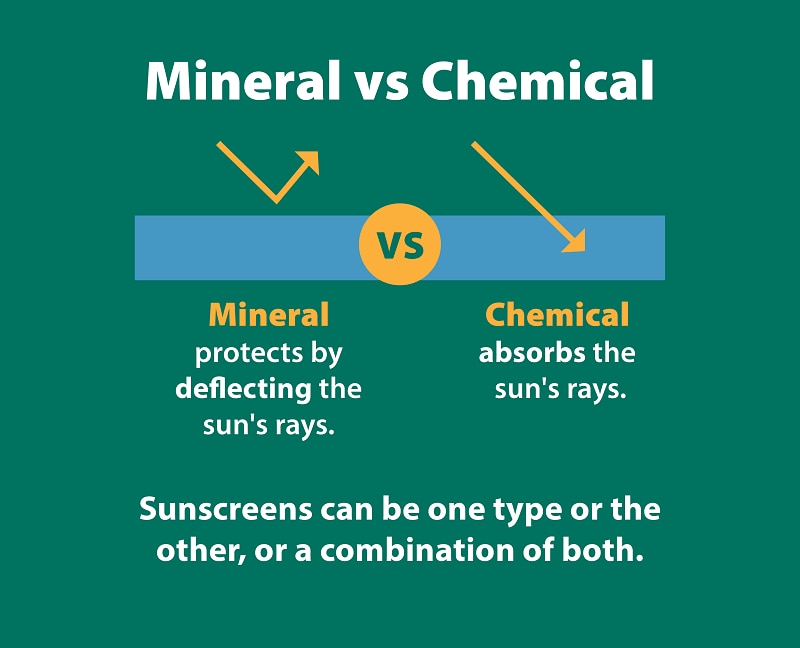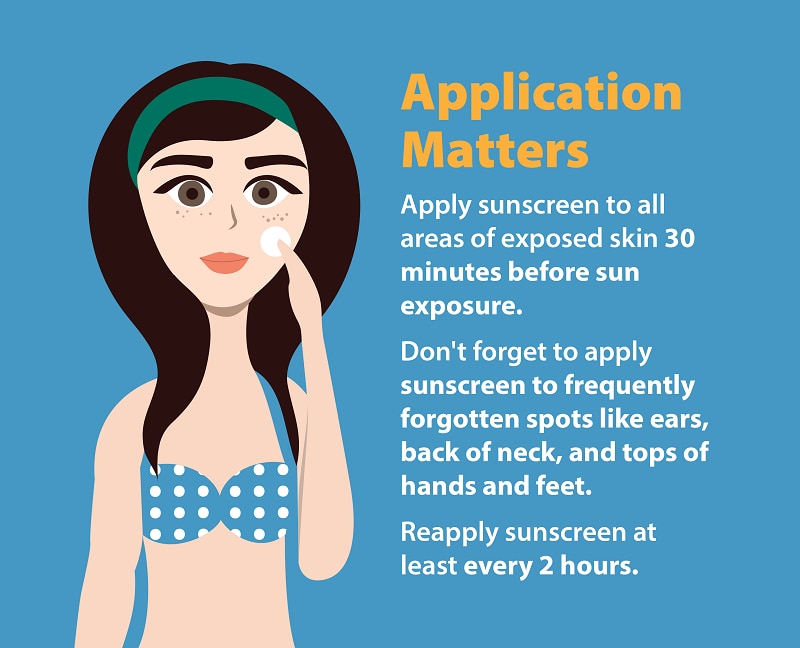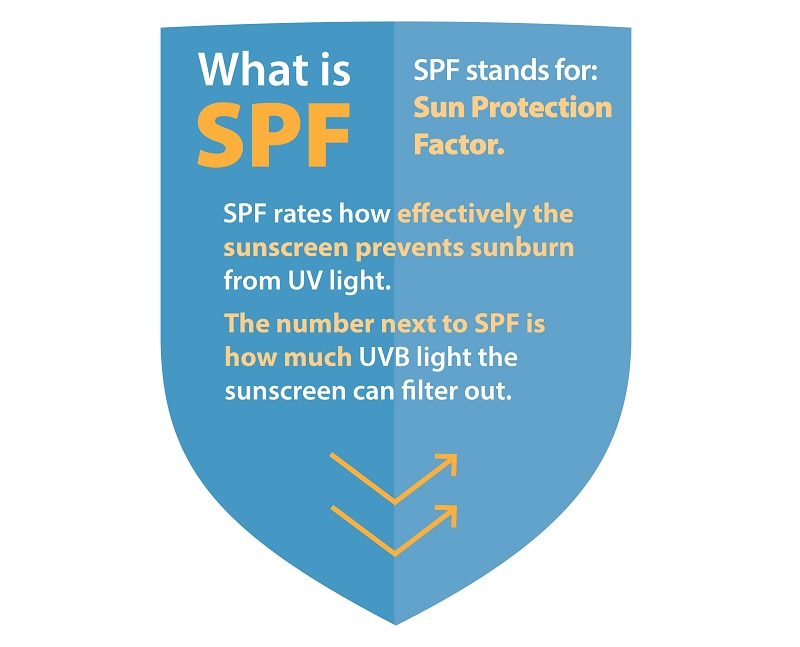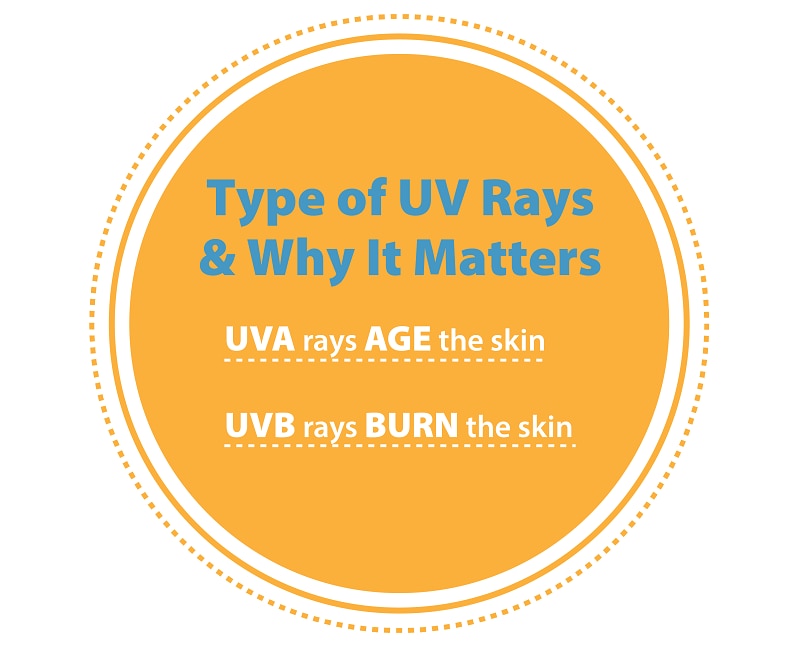
Understandably, there's some confusion over mineral versus chemical sunscreen and whether or not it matters.
Here's a summary of these different types of sunscreen:
- Mineral sunscreen (also referred to as physical sunscreen): Provides protection by deflecting the sun's rays. The active ingredients in mineral sunscreen include the minerals titanium dioxide and/or zinc oxide.
- Chemical sunscreen: Protects your skin by absorbing the sun's rays and may contain active ingredients such as oxybenzone or avobenzone.
Both chemical and physical sunscreens offer excellent protection and many sunscreens contain both types of UV filters.5 That said, there are some pros and cons to each. Considering these can help you choose the best type for you and your family.
Benefits of physical sunscreen:
- is better tolerated by most skin types
- starts protecting your skin as soon as it's applied
- is thicker and harder to apply and blend
- may leave white residue on your skin
Benefits of chemical sunscreen:
- is easier to apply
- goes on invisible
- is often less expensive than physical sunscreen
- it may be irritating to more skin types
- needs to be on the skin for at least 20 minutes to provide protection. 5
How to Apply Sunscreen2

When it comes to application, technique counts. The quality of your sunscreen means very little if it isn't applied correctly. Here are a few pointers:
Even application over all areas of exposed skin can help ensure total protection. This includes those often overlooked spots, like the back of your neck, your ears, and the tops of your feet and hands.
Read your sunscreen's label for application recommendations, which typically recommends using an ounce of sunscreen to cover all exposed skin.
For best results, sunscreen should be applied 30 minutes before sun exposure and should be reapplied at least every two hours, regardless of SPF or water-resistance level.2
Because sunscreen can lose its potency over time, using a product past its expiration date isn't recommended.6
Dealing with Sun Damage
Sun damage can impact the skin in different ways. Skin cancer is the most serious risk associated with sun exposure.
Sun damage can also dramatically alter your skin's appearance by causing uneven pigmentation in the form of age spots and freckles, and causing fine lines, wrinkles, and sagging due to the breakdown of collagen and elastin fibers.
Sun damage isn't always immediately visible to the naked eye and small skin cancers can be hard to detect to an untrained eye or when lesions develop on hard-to-see areas like the scalp and back.
A dermatologist can examine your skin and assess any damage caused by sun exposure, as well as assess any new moles or skin changes.
If you'd like to reduce the signs of sun damage to your skin, there are several options offered by dermatologists and cosmetic surgeons, depending on the severity of the damage. Treatments and procedures available to treat discoloration, wrinkles, and sagging7 include:
- Laser resurfacing
- Dermabrasion
- Microneedling
- Chemical peel
- Facial fillers
- Cosmetic surgery
- Cryotherapy
Your CareCredit credit card can help you pay for a consultation with a dermatologist or cosmetic surgeon, as well as skin treatments and cosmetic procedures.* Use our Acceptance Locator or download the CareCredit Mobile App to find a licensed dermatologist or cosmetic surgeon near you who accepts the CareCredit credit card.









